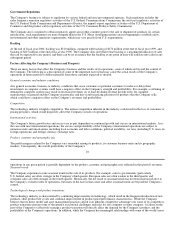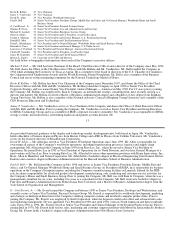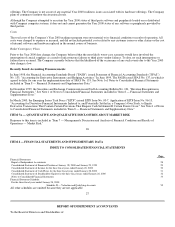Dell 1999 Annual Report Download - page 19
Download and view the complete annual report
Please find page 19 of the 1999 Dell annual report below. You can navigate through the pages in the report by either clicking on the pages listed below, or by using the keyword search tool below to find specific information within the annual report.
that valued its foreign currency instruments against a thousand randomly generated market price paths. Anticipated transactions, firm
commitments, receivables and accounts payable denominated in foreign currencies were excluded from the model. The VAR model is
a risk estimation tool, and as such is not intended to represent actual losses in fair value that will be incurred by the Company.
Additionally, as the Company utilizes foreign currency instruments for hedging anticipated and firmly committed transactions, a loss
in fair value for those instruments is generally offset by increases in the value of the underlying exposure. Foreign currency
fluctuations did not have a material impact on the Company's results of operations and financial position during fiscal years 2000,
1999 and 1998.
24
Euro Conversion
On January 1, 1999, certain member countries of the European Union established fixed conversion rates between their existing
currencies and the Euro. The transition period for the introduction of the Euro ends June 30, 2002. Issues facing the Company as a
result of the introduction of the Euro include converting information technology systems, reassessing currency risk, negotiating and
amending licensing agreements and contracts, and processing tax and accounting records. The Company is addressing these issues and
does not expect the Euro to have a material effect on the Company's financial condition or results of operations.
Investments
The fair value of the Company's short-term, long-term and equity investments at January 28, 2000, was approximately $3 billion. The
Company's investment policy is to manage its investment portfolio to preserve principal and liquidity while maximizing the return on
the investment portfolio through the full investment of available funds. The Company diversifies the investment portfolio by investing
in multiple types of investment-grade securities and through the use of different investment brokers. The Company's investment
portfolio is partially invested in short-term securities with at least an investment grade rating to minimize interest rate and credit risk
as well as to provide for an immediate source of funds. The Company also invests in equity investments in companies in order to
enhance and extend the Company's direct business model and core business initiatives. Based on the Company's investment portfolio
and interest rates at January 28, 2000, a 100 basis point increase or decrease in interest rates would result in a decrease or increase of
$20 million, respectively, in the fair value of the investment portfolio. Changes in interest rates may affect the fair value of the
investment portfolio; however, such gains or losses would not be realized unless the investments are sold.
Factors Affecting the Company's Business and Prospects
There are numerous factors that affect the Company's business and the results of its operations. These factors include general
economic and business conditions; the level of demand for personal computers; the level and intensity of competition in the
technology industry and the pricing pressures that may result; the ability of the Company to timely and effectively manage periodic
product transitions, as well as component availability and cost; the ability of the Company to develop new products based on new or
evolving technology and the market's acceptance of those products; the ability of the Company to manage its inventory levels to
minimize excess inventory, declining inventory values and obsolescence; the product, customer and geographic sales mix of any
particular period; and the Company's ability to continue to improve its infrastructure (including personnel and systems) to keep pace
with the growth in its overall business activities. For a discussion of these and other factors affecting the Company's business and
prospects, see "Item 1 — Business — Factors Affecting the Company's Business and Prospects."
Year 2000
The following disclosure is a Year 2000 readiness disclosure statement pursuant to the Year 2000 Readiness and Disclosure Act.
State of Readiness
The Company established a formal Year 2000 readiness program in February 1997. The Company's Year 2000 program consisted of
two separate initiatives, the Millennium Project and the Product Group Y2K Project.
The purpose of the Millennium Project was to assess the Year 2000 readiness of the Company's component and service providers and
the Company's internal systems and devices. The Company identified and assessed its internal systems and devices and, where
appropriate, took steps to
25
make those systems Year 2000 ready. The Company completed its assessment and renovation of all mission critical internal systems
and devices prior to the Year 2000 date change and did not experience any material failures as a result of the date change. The
Company also identified, through the Millennium Project, its critical component and service providers and assessed each vendor's
Year 2000 readiness. The Company assigned each such vendor a priority rating and developed contingency plans for each vendor. The
Company completed its assessment and contingency plans prior to the Year 2000 date change and did not experience any material
failures as a result of the date change.
Through the Product Group Y2K Project, the Company analyzed the Year 2000 readiness status of the computer hardware
manufactured by the Company and implemented an ongoing Year 2000 testing and monitoring program for all new hardware
























